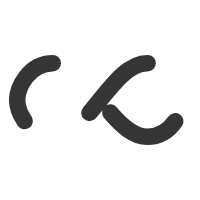



A well-structured Chart of Accounts (COA) is a cornerstone of effective financial management. It serves as the backbone of your accounting system, organizing your financial data in a way that makes it easy to track income, expenses, and other financial activities. But beyond just tracking transactions, a well-organized COA can significantly improve the accuracy of your business decisions. In this post, we’ll dive into how a well-structured COA can enhance decision-making and help you achieve your business goals.
A well-designed COA breaks down your financial data into specific, relevant categories, giving you a clear view of your business’s financial health. When your income and expenses are properly categorized, you can quickly assess how different parts of your business are performing.
For example, if you own a service-based business like a pet grooming company, your COA should include separate categories for grooming services, pet supplies, and labor costs. This clear segmentation allows you to see where your revenue is coming from and how much each service is costing you. When decisions need to be made—whether about cutting costs or expanding services—you’ll have all the necessary data right at your fingertips.
A well-structured COA plays a crucial role in accurate budgeting and forecasting. With detailed accounts for every aspect of your business, you can make realistic projections for future income and expenses. Accurate forecasting enables you to plan for growth, anticipate potential cash flow shortages, and allocate resources effectively.
For instance, if your COA is organized to track overhead costs like rent, utilities, and insurance separately from direct costs like supplies and wages, you’ll be able to budget for each category with precision. This level of detail helps you make informed decisions when setting goals and planning for long-term success.
One of the key benefits of a structured COA is that it makes cost management much easier. By categorizing expenses into detailed subaccounts, you can track where money is being spent and identify areas for cost reduction.
For example, if you notice that the cost of supplies is rising disproportionately compared to revenue, your COA will help you pinpoint which specific supplies are driving up costs. Armed with this information, you can negotiate with suppliers, find more cost-effective alternatives, or adjust pricing to maintain profitability.
A well-organized COA allows you to break down financial data by different business areas or departments, making it easier to analyze performance and make decisions. For businesses with multiple revenue streams or departments, this is invaluable.
For example, a pet services business that offers grooming, pet sitting, and retail sales can use the COA to track the financial performance of each service separately. This detailed breakdown helps you determine which services are most profitable and which may need more investment or strategic changes. Decision-making becomes more precise because you’re able to focus on specific areas without being overwhelmed by aggregated data.
Financial reports are only as good as the data behind them, and a well-structured COA ensures that your reports are accurate and reliable. Whether you’re generating profit and loss statements, balance sheets, or cash flow statements, having a properly categorized COA ensures that every transaction is accounted for in the right place.
Accurate financial reports are essential for making informed decisions about your business. If your COA is disorganized or too simplistic, your reports might not provide the insights you need. But with a well-structured COA, you’ll have confidence that your reports reflect the true financial picture of your business.
When your financial data is organized and easy to access, decision-making becomes faster and more efficient. You won’t need to spend hours sifting through disorganized accounts or manually tracking down key data. Instead, you can pull up the information you need, analyze it, and make informed decisions quickly.
This streamlined decision-making process is especially important when responding to unexpected challenges or opportunities. Whether you need to cut costs during a slow period or ramp up operations during a busy season, a well-structured COA provides you with the financial clarity you need to act quickly.
A structured COA not only boosts decision accuracy but also ensures compliance with accounting standards and simplifies tax preparation. With clearly defined categories for tax-deductible expenses, payroll, and liabilities, your COA makes it easier to report financial information accurately and avoid compliance issues.
When it’s time to file taxes, having your income and expenses categorized correctly will help you take advantage of all available tax deductions and reduce the risk of errors. It also simplifies the process for your accountant, allowing them to focus on optimizing your tax strategy instead of sorting through disorganized data.
A well-structured Chart of Accounts is an indispensable tool for any business owner who wants to improve decision accuracy and overall financial management. By organizing your financial data in a way that is clear, detailed, and easy to navigate, you’ll be able to make better decisions, manage costs effectively, and maintain financial clarity.
If you need help setting up or optimizing your Chart of Accounts for smarter decision-making, reach out to Asraf Bookkeeping Services today. Let us help you structure your finances for success!

Rerum congue dis illo ridiculus beatae nesciunt assumenda nostra. Viverra ipsum fuga, per ipsam leo sodales litora ullam assumenda ultrices.
No Related Post